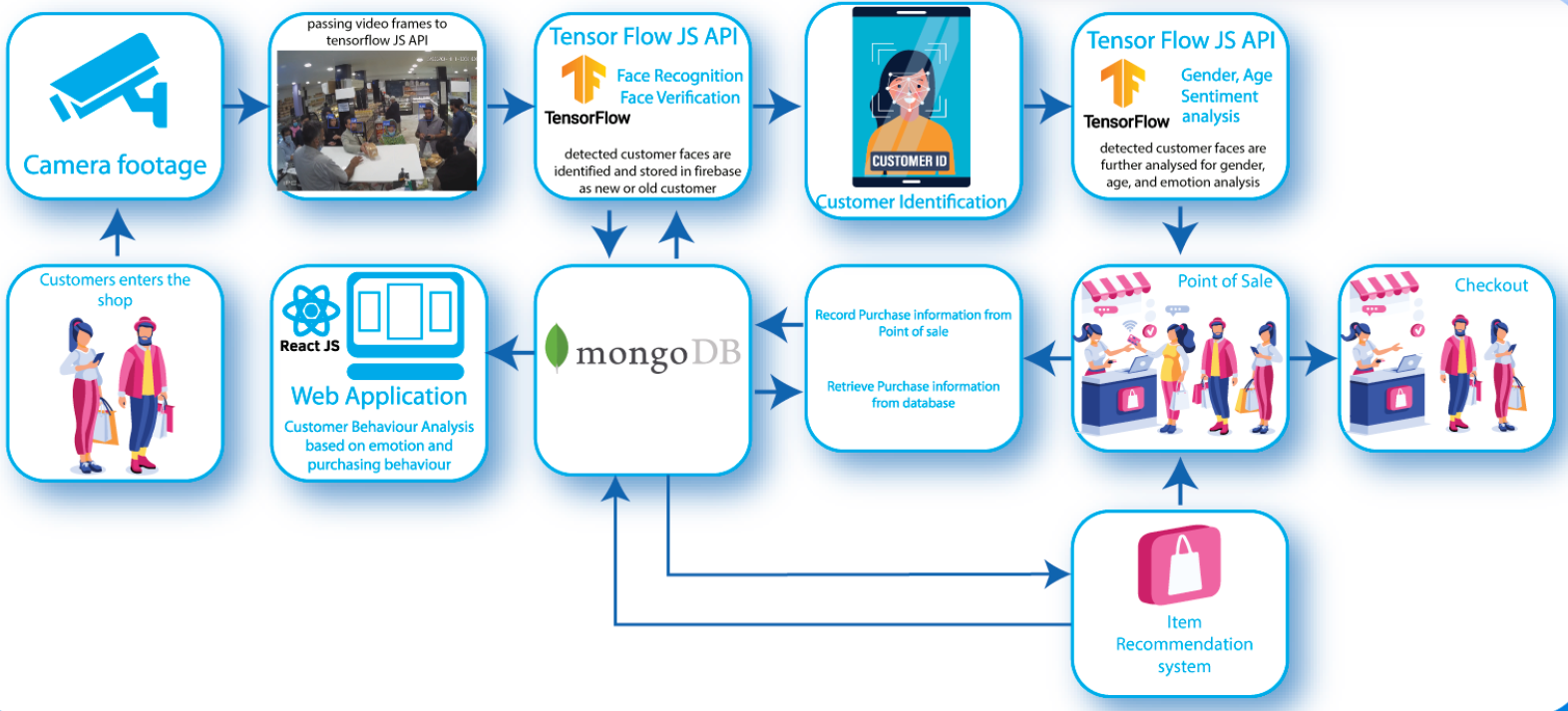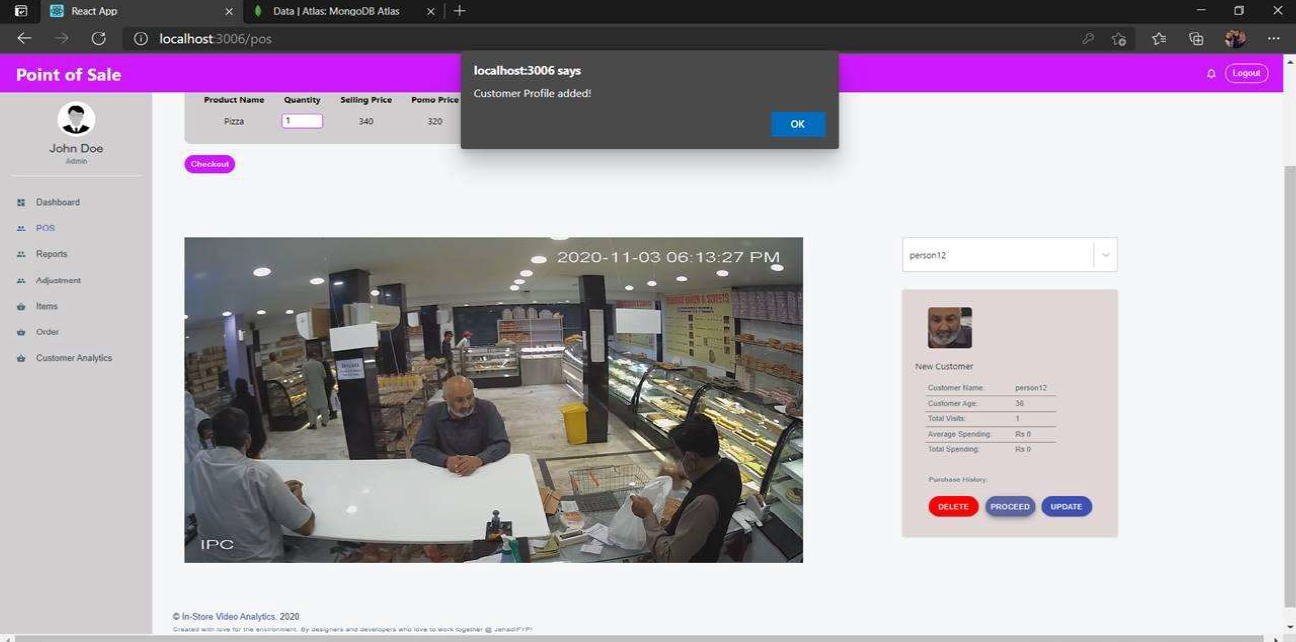In-Store Customer Analytics Through Facial Detection and Recognition
Face Recognition and Verification are critical modern methods that have vast applications in the world today. Face recognition refers to the process of matching a face against one or more known faces from an existing database; whereas face verification refers to confirming whether two inputs belong to the same person or not. Conventionally, there are 4 primary stages in the face recognition system: face detection, face alignment, face representation, and face matching. Face detection refers to identifying a human face from a given input, while face alignment is the technique to further analyze the geometric structure of the face and distinguish between all facial components. This extracted information needs to be stored using a mathematical representation which is defined as face representation, and finally, the stored representations of different faces are compared with each other to identify the same faces, known as face matching. Face recognition is classified as a pattern recognition problem, with the 2 major components being face representation and face matching. For face representation the goal is to extract distinguishing features to be able to discriminate between different images, while for face matching it is to build classifiers that can discern different face patterns.

Face representation tends to have a drastic effect on face recognition systems since input images can be greatly affected by multiple environmental factors such as pose, expression, light intensity, backgrounds, and image resolutions which contribute to reducing the similarity of face samples belonging to the same individual. These representations used in detection systems are termed as descriptors. These descriptors are fundamentally vectors consisting of quantized facial features, allowing convenient storage of facial information along with the ability of determining similarities. The ability for systems to successfully detect and recognize human faces has had vast applications in various fields of security, surveillance, banking, and retail etc. over the past years and continues to rapidly expand. Recently, this technology has found its way into the retail market where it is being used to extract valuable insights pertaining to different retail sections such as product tracking, customer behavior detection, customer location tracking, staff monitoring as well as surveillance. Inferences from such analytics play a vital role in making paramount decisions and predictions affecting business performance.
Building up to the above-mentioned practical implementations of face recognition in retail, we observe the majority of the practices to be computationally extensive and require expensive hardware. We, therefore, propose a more active analysis of the customer behavior information through the use of video analytics, and image processing. We present an automated web-based approach to study and display customer behavior through in-store analytics. This system combines face detection and recognition, repeat customer identification, and customer purchasing behavior analysis. Moreover, we propose using an advanced React-based POS dashboard to be integrated with our face recognition model and log customer purchases alongside, thus allowing retail owners to manage their sales analytics as an added feature as well.

Faculty
-
Dr. Muhammad Moazam FrazDr. Muhammad Moazam Fraz
-
Dr. Muhammad ShahzadDr. Muhammad Shahzad
Students
-
Muhammad Saad Tariq
-
Osama Akhlaq
-
Ershad Hussain
